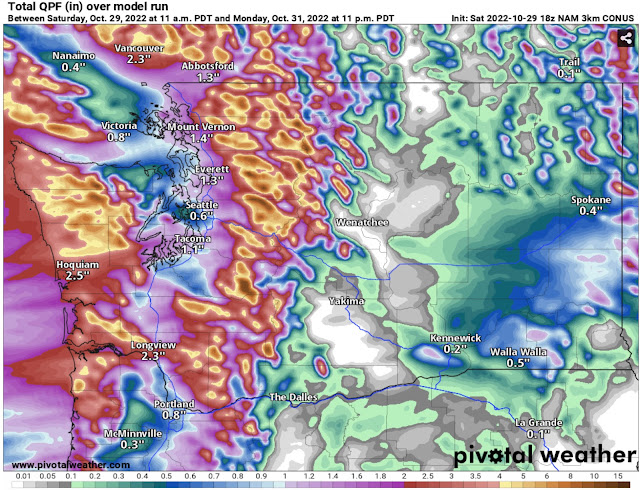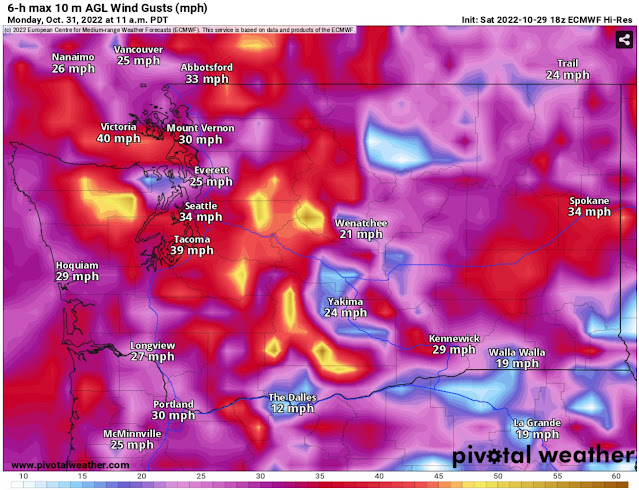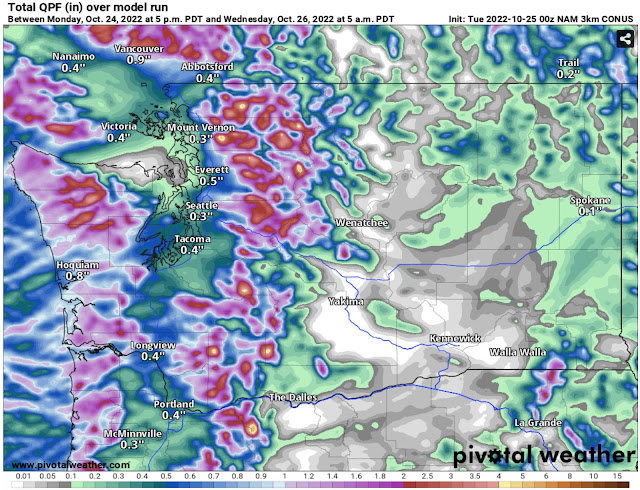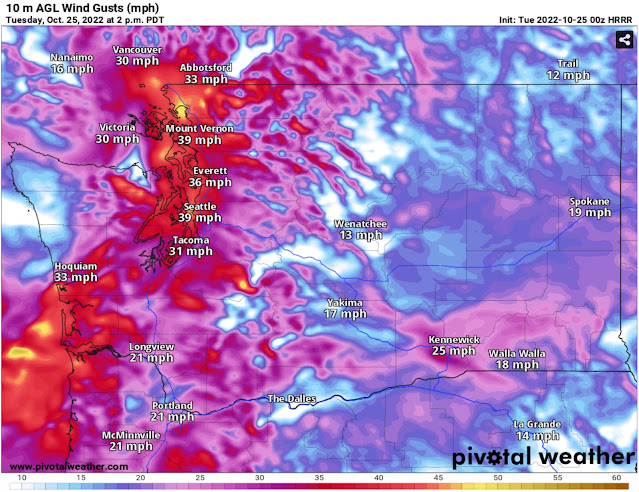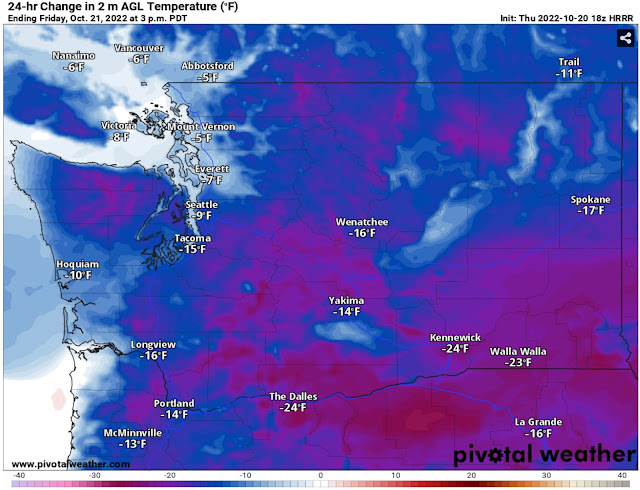No FastCast tonight…continue reading below for an update on the ongoing atmospheric river and gusty winds.
A rainy and windy night is ahead for the Puget Sound area. After a prolific rain shadow dominated the weather pattern today, the atmospheric river will fill in the rain shadow as it moves south. Take a look at the crazy rain shadow in the graphic below.
This is an incredible example of the rain shadow effect. With westerly flow all day Sunday, the west slopes of the Olympics picked up 3-8 inches of rain, while just 50 miles away, Seattle had under 0.05”. The Cascades and lowland areas from Everett northward receive 0.5-2 inches as well.
Rain will fill in the mostly dry areas overnight. Let’s take a look at the HRRR high-resolution forecast for rain through 12 AM Tuesday.
The HRRR shows 0.8-1.25 inches in the lowlands, 0.25-1.25 inches in Eastern Washington, and 1-3 inches on the coast. With snow levels over 7,000 feet, the mountains will pick up 3-6 inches of rain.
Let’s compare this with the NAM high-resolution forecast, also through 12 AM Tuesday.
The NAM shows a different solution, with substantially less rainfall over the lowlands and the Portland area. The NAM shows a big rain shadow between Seattle and Olympia. This is a big difference from the HRRR forecast.
The European model sides more with the HRRR, showing a wetter solution through Monday night.
The European model shows 0.8-1.5 inches in the lowlands and Portland area.
In addition to the heavy rain, it will be breezy to windy across the region from Sunday night into Monday morning. The HRRR forecast is below for gusts at 12 AM Monday.
The HRRR shows gusts peaking at 35-45 mph around the lowlands and coast overnight into Monday morning.
The NAM also shows windy weather. Below is the NAM forecast for gusts at 11 PM Sunday.
The NAM shows strong gusts of 40-50 mph around the lowlands & coast. This is likely a bit too strong, but gusty winds are still possible.
In short, be prepared for steady rain (heavy at times) and gusty winds overnight Sunday, with winds calming by Monday morning and rain continuing (but tapering gradually) through midday Monday. Be prepared for isolated tree damage, power outages, and standing water through Monday.
Heavy rainfall over burn scars in the Cascades has a potential for debris flows, flash flooding, and landslides through Monday. Accordingly, NWS Seattle has issued a Flash Flood Watch for the Cascades. Additionally, large waves are possible on the WA & OR Coasts on Monday, with 20-25 foot surf possible. Stay safe on the beaches.
Active weather will continue into the first week of November. Stay tuned to the blog & Twitter for updates!







